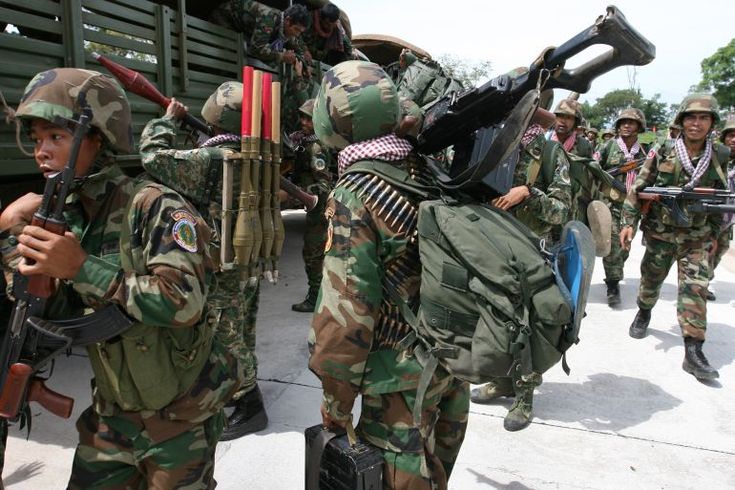Thailand-Cambodia Dispute 2025: Temple or Territorial Crisis?

Thailand-Cambodia Dispute 2025: Temple or Territorial Crisis?
The temple dispute between Thailand and Cambodia is not just a clash over a historical site, but a deep-rooted conflict involving national identity, political tensions, and strategic control. From drone attacks to full military deployments, every aspect of this issue hides a complex truth. Read this blog to uncover the real story behind the Prasat Ta Muen Thom temple and the latest escalation in this ongoing border conflict.
Historical Context and Border Origins
The ongoing border dispute between Thailand and Cambodia is not a new development. Its origins trace back to the colonial era in 1907 when Cambodia was under French rule. During this time, French authorities demarcated border lines, which Thailand never fully accepted. In 1962, the International Court of Justice (ICJ) awarded the Preah Vihear temple to Cambodia. However, several other regions, like Prasat Ta Muen Thom, remain contested to this day. These disputes have simmered for decades, occasionally flaring up with even the smallest trigger, underscoring the deep historical and political roots of the tension.
Prasat Ta Muen Thom: Cultural and Strategic Importance
Prasat Ta Muen Thom is an ancient Hindu temple constructed between the 11th and 12th centuries during the reign of King Udayadityavarman II. Dedicated to Lord Shiva, the temple features a naturally formed Shiva Lingam and is situated near the Thai-Cambodian border in the Dangrek Mountains. Its architecture is primarily sandstone and laterite, with a central sanctuary, corridors, and a water drainage system extending from the Lingam toward the east. The temple holds not only cultural and spiritual value but also strategic importance due to its location. Thai tourists consider it a symbol of national pride, while Cambodia also claims it as part of their heritage—fueling the ongoing tensions.

Trigger Events: Chong Bok Skirmish to July 2025 Escalation
In May 2025, a clash between Thai and Cambodian troops in the Chong Bok area resulted in the death of a Cambodian soldier. Thailand claimed it was a security operation, while Cambodia accused Thailand of breaching its territory. Following the incident, Cambodia increased its military presence and sought strategic support from China.
On July 24, the conflict escalated dramatically near Prasat Ta Muen Thom, with exchanges of gunfire and rocket attacks. Thailand accused Cambodia of launching a BM-21 rocket attack that hit civilians, damaging a hospital and a fuel station. In retaliation, Thailand deployed F-16 jets and launched "Operation Yuttha Bodin." Cambodia countered that Thai forces had initiated the assault. The situation has evolved into a matter of national honor and regional stability.
Civilian Impact and Humanitarian Crisis
The ongoing conflict has had devastating effects on civilians. In Thailand’s Surin and Ubon Ratchathani provinces, over 100,000 residents were evacuated. More than 4,000 civilians were also displaced in Cambodia’s Oddar Meanchey region. In Thailand, 86 villages were entirely evacuated, and critical infrastructure like hospitals, schools, and fuel stations were damaged. One of the casualties was an 8-year-old child, highlighting the human toll of the dispute. Relief camps have been set up with basic facilities, but fear and uncertainty persist among the affected communities.
Military Dynamics and Power Imbalance
There is a significant military disparity between the two nations. Thailand boasts modern military capabilities, including F-16 fighter jets, drones, and a strong ground force of around 350,000 personnel. Cambodia, by contrast, has limited military resources and a defense budget that falls far short. Cambodia has announced plans for mandatory conscription starting in 2026 to address its manpower shortage. This imbalance presents a strategic challenge for Cambodia and contributes to its defensive posture.

Diplomatic Efforts, ASEAN & International Response
Following the recent escalation, Cambodia approached the UN Security Council, accusing Thailand of aggression. While Thailand rejected the ICJ's jurisdiction, it has expressed willingness to resolve the matter through bilateral talks. ASEAN, led by Malaysian Prime Minister Anwar Ibrahim, called for an immediate ceasefire. Major powers like the U.S., EU, China, and Australia also emphasized the importance of civilian protection and peaceful resolution. However, strong nationalist sentiments on both sides have made diplomatic negotiations more complicated.
Conclusion: From Temple to Tension
Prasat Ta Muen Thom is no longer just a religious or archaeological site—it has become a symbol of national pride and a flashpoint in a broader geopolitical struggle. The conflict reflects unresolved colonial-era boundaries that now manifest in modern geopolitics. Whether diplomacy can defuse this volatile situation remains to be seen. Meanwhile, ordinary people continue to bear the brunt of the escalating tension.
To explore more such deep-dive geopolitical stories and contemporary issues, stay connected with Talk n Knock – where we go beyond headlines to reveal the full picture.
Check out more exclusive blogs: https://www.talknknock.com/blogs
Frequently Asked Questions
About the Author
Talk n Knock Team